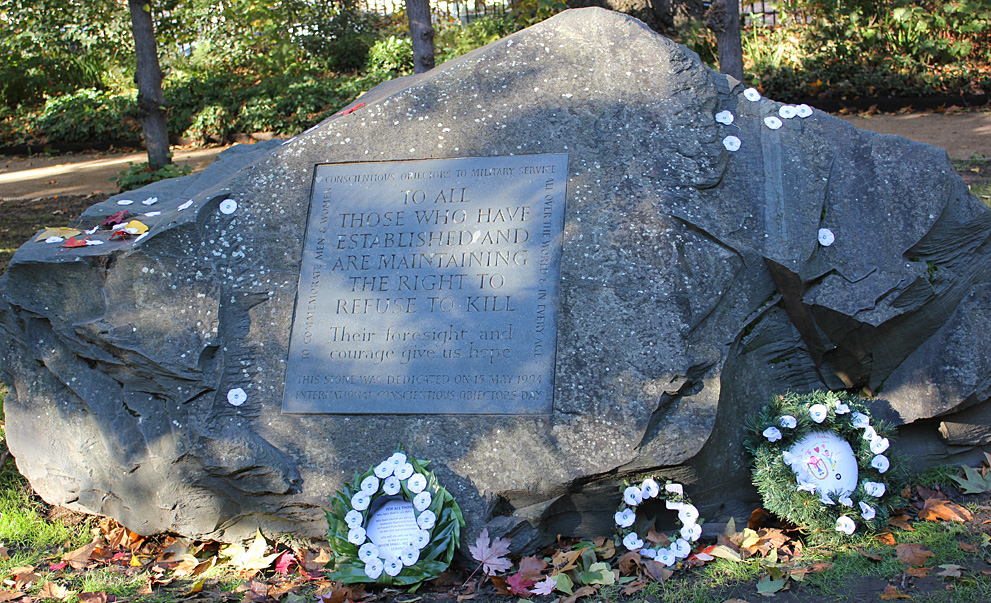|
MEMORIALS
innocent victim
anti-aerial bombing
vera brittain
fenner brockway
edith cavell
cherry tree
richard cobden
co plaque
co stone
gandhi
mark gertler
peace pagoda
peace machine
henry richard
bertrand russell
dick sheppard
george lansbury
martin luther king
alfred salter
charles cobb
central hall
prisoners of war
burghers of calais
virginia woolf
sylvia pankhurst
children's memorial
murals
|
CONSCIENTIOUS OBJECTION
There have always been people who are committed to an idea, an ideal, a value, a religion, a cause. Among them, there have always been people convinced that, at whatever risk to themselves, their commitment must not involve the use of violence or war. They have hung on to that conviction despite being despised, condemned and punished for it. It takes a lot of courage to hold out against violence and killing when your family and friends are threatened and may themselves turn against you, when you face public hostility and hatred, when the leaders of your society are determined that war, not peace, is the right and heroic way forward, and when you are accused of being a coward and a traitor. The conscientious objectors who refused to fight in the First World War were courageous in this way.
CONSCRIPTION
In Britain in 1914, after 20,000 casualties had been recorded in the first two weeks of the war, compulsory call-up for British men looked increasingly likely. Pacifist members of the No-Conscription Fellowship, set up in 1915, successfully campaigned to secure 'the conscience clause' in the 1916 Conscription Act: the right to claim exemption from military service.
Over 16,000 men made that claim. They were required to attend a tribunal (an interviewing panel with legal authority) to have the sincerity of their claims assessed. The government meant well: these tribunals were intended to be humane and fair. But it was left to local councils to choose the people who actually sat on the panels, and they often selected themselves. They were a mixed bunch: businessmen, shopkeepers, landowners, retired military officers, civil servants and the like, most of them too old to be called up. Most were also strongly patriotic and therefore prejudiced against anyone whom they thought was not. Often they were people 'of not very great depth of vision or understanding', genuinely confused about their task and its complicated guidelines. A few tribunal members were women, who seemed particularly incensed by the conscientious objectors' (COs') point of view. Another hazard for COs was that each tribunal panel contained one army-selected member, attending every hearing and with the right to cross-examine each applicant. These 'military representatives' had a common aim: to get as many men as possible into the army to fill the gaps left by the dead.
|
CONSCIENTIOUS OBJECTORS STONE London.
The erection of this massive slate stone to commemorate the struggle of conscientious objectors past and present was coordinated by the Peace Pledge Union and unveiled by the PPU's President, Michael Tippett in 1994 in Tavistock Square. It has become a focus for activities on International Conscientious Objectors Day each May. Architect: Hugh Court.
|
|
The COs came from all walks of life, and varied widely in their ability to cope with often rude and aggressive interviewers. Some didn't get a chance to say a word, other embarked on well-prepared argument. Whatever they said, the result was the same: only a handful received full exemption, and many were denied any form of exemption at all.
|

